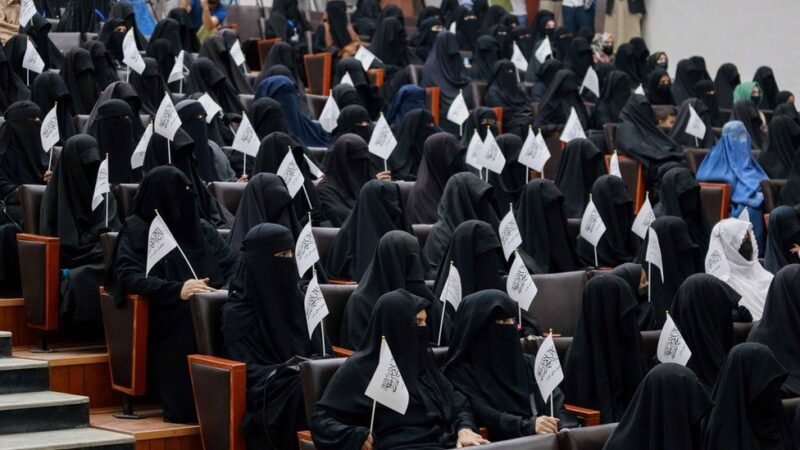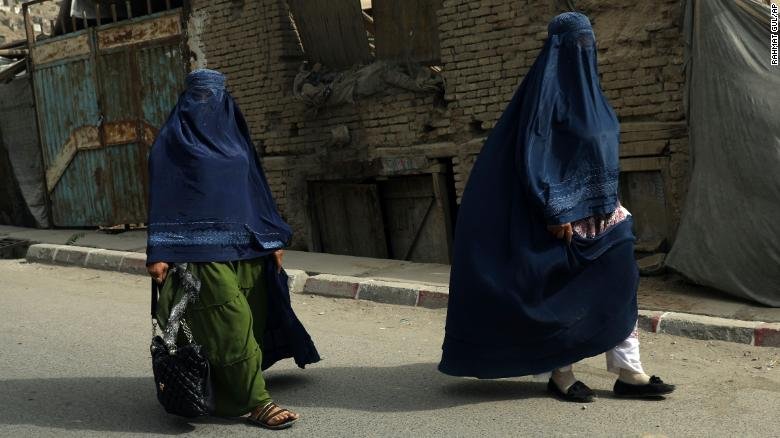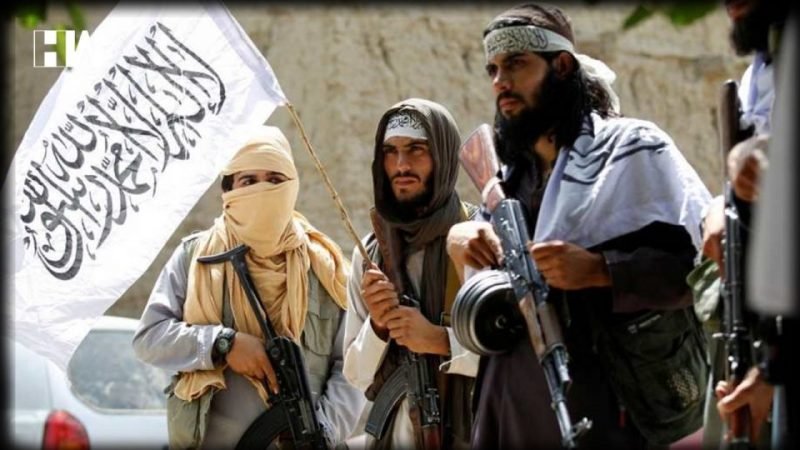A glance at Afghanistan after Taliban War: A State of Broken Democracy

Introduction
On 15 August 2021 Afghan capital, Kabul captured by the infamous jihadist, fundamentalist Islamic group known as the TALIBAN after the US army decided to withdraw its forces from the country after a 20- year war (2001 – 2021). The longest-fought war in the history of the United Nations. They regained their power after they were overturned by the US Army back in 2001. Due to the insanity and brutality of the Taliban government, there is an enormous refugee crisis in the neighbouring countries of Afghanistan. Around 2.2 million Afghan refugees escaped their home place after the Taliban took over their country after basic fundamental rights and women’s rights were seized from the citizens of Afghan[i].
Why did the US Army capture Afghanistan in the first place?
Afghanistan is said to be the headquarters of the AL–QAEDA operatives led by the infamous terrorist leader Osama –bin Laden. This terror group was spread across Afghanistan and Pakistan. Taliban was the aftermath of Afghanistan’s post–Soviet war and provided al – Qaeda sanctuary for operations. On 9 September 2001, Al – Qaeda operatives hijacked four commercial planes and crashed them in New York’s World Trade Centre and Washington DC’s Pentagon. The US government mainly suspected Afghanistan as the base of all these terrorist operations. So, America’s then President George .W. Bush decided to declare war on the Al – Qaeda and Taliban forces in Afghanistan with allied forces of Britain. After getting gruelly defeated by the joint forces of the US, Northern Alliance, Britain and ethnic Pashtun anti – Taliban forces, the Taliban retreated around November 2001, and the UNSC passed a resolution where the UN had to establish an administration and maintain law and order of the state[ii].

How did the Taliban recapture Afghanistan and have a second coming once again?
In 2018, there was news travelling that the US would completely withdraw its troops after two decades of continuous war with the Taliban’s, putting the Afghan government under the pressure of a re-emerging Taliban. The Taliban never really gave up its fight against the US–led forces. After its defeat by the American troops back in 2001, The Taliban went back to resort to guerrilla warfare. It would strategically target installations, public places, military bases, and government convoys. Despite the losses the Taliban suffered, it regrouped and recruited new forces in enough numbers to see through the American stay and watch them getting tired of the insurgency. After signing a peace treaty, the group took control of 20% of the Afghan districts and after, the US Army withdrew its troops entirely. The Taliban captured the country altogether, and they returned stronger than their first visit[iii].
What about the other religions in Afghanistan?
In the heritage site of BAMIYAN, ancient Buddhist statues were destroyed by the Taliban in the early 2001s. Back at that time, this news shocked the entire world. But as they are back in the government, they are imposing an understanding of -the government image and turning the ruins into a tourist attraction. “BAMIYAN has always been a part of Afghanistan that the outside world has focused on,” said Llewelyn Morgan, the author of “The Buddha’s of Bamiyan” and a professor of classics at the University of Oxford. “The Taliban know that, and that’s why in their slightly inept way, they are still trying to paint themselves as a constructive government[iv].”
What is the condition for women and what are the newly imposed laws on the citizens?

After the Taliban takeover, the government systematically excluded women and girls from public life, including the right to work and study. Girls from sixth grade are banned from attending school and barred from working most jobs outside the home. Stringent restrictions are imposed on women’s bodies and are escalating. The Taliban announced in May that women must cover their faces in public and are instructed to stay at home at all times except for emergencies. They are banned from travelling long distances without a male company, and the government denies women who are seen without a male company essential services. “Decades of progress on gender equality and women’s rights have been wiped out in mere months. We must continue to act together, united in our insistence on guarantees of respect for the full spectrum of women’s rights.” UN Women Executive Director Sima Bahous [v].
The refugee crisis of Afghanistan civilians fleeing to neighbouring countries
Of the more than 6 million Afghans who were forced out of their homes by the end of the pandemic.3.5 million were displaced within Afghanistan, while 2.6 million were hosted as refugees, accounting for one of the largest refugee situations in the world. They are fleeing due to their oppressive government, natural disasters, poverty, hunger, Covid -19 pandemic etc. Most of the refugee population is living in Pakistan. More than 120,000 Afghans were airlifted and scattered around the world, and Around 76,000 refugees have reached the US. Canada has committed to receive 40,000 Afghans by the year 2024, about 17,000 admitted so far[vi].
What is India’s Stand on the Taliban government of Afghanistan?
India is one of the countries that agreed to provide shelter for Afghan refugees. India also launched an electronic visa, “e-Emergency X- Misc.” in August 2021 for Afghan refugees who wish to come to India. Since the launch of the new visa, India has received almost 60,000 applications from afghan refugees. As an essential ally and neighbour to Afghanistan, India must extend a helping hand in troubling times, and the e- visa initiative is a crucial first step toward fulfilling those neighbourly duties. But this step taken by India towards Afghan refugees has raised many questions in the people’s minds about its foreign policies towards refugees and asylum seekers.[vii] The United Nations Human Rights Council (UNHRC) documented 8275 Afghan refugees and 6000 plus asylum seekers in India under the mandate. India has been a traditional destination for refugees from Afghanistan over the last strenuous 30 years due to the successive bouts of violence. The three main waves of refugees arrived during the Soviet-Afghan war (1979-1989), the Afghan Civil War (1992 – 1996), and during the Taliban rule (1996-2001) and again after the Taliban takeover on 15 August 2021[viii].

Conclusion
After the study, we come to a conclusion about Afghanistan’s state after the Taliban takeover that it is a group that follows ancient measures of Islam tradition like women don’t have rights to work, speak, go out without male company or do anything against the rules or else measures will be taken such as denial of essential services etc. Their regime overall is highly oppressive of anyone in their state; therefore, many citizens are fleeing to different neighbouring countries seeking shelter from the many obstacles like poverty, hunger, the government etc. But the government is also showing a harsher side after they withdrew the throne from the democratic government of Afghanistan after the US army was withdrawn. A lot of oppressing laws are imposed on the people of Afghan. But most people are now supporting the government as they think the democratic government was weak, and they either escaped and couldn’t protect when needed as the Taliban are on the throne; they tend to support them only due to lack of choices.
Notes
[i] https://www.cfr.org/backgrounder/taliban-afghanistan.
[ii] https://www.cfr.org/backgrounder/taliban-afghanistan.
[iii] https://www.indiatoday.in/interactive/immersive/taliban-rise-fall-comeback-us-afghanistan-history/.
[iv]https://www.nbcnews.com/news/world/taliban-destroyed-afghanistans-ancient-buddhas-now-welcoming-tourists-rcna6307.
[v]https://www.unwomen.org/en/news-stories/in-focus/2022/08/in-focus-women-in-afghanistan-one-year-after-the-taliban-takeover#:~:text=Women%20are%20banned%20from%20travelling,denied%20access%20to%20essential%20services.&text=Decades%20of%20progress%20on%20gender,wiped%20out%20in%20mere%20months.
[vi] https://www.nytimes.com/2022/08/12/us/afghanistan-refugees.html.
[vii]https://www.moneycontrol.com/news/trends/current-affairs-trends/explained-where-does- india-stand-on-afghan-refugees-fleeing-the-taliban-7374401.html.
[viii] https://www.justsecurity.org/78586/afghan-refugees-in-india-highlight-the-need-for-indian-domestic-refugee-law/.


















